
Virtual Archaeology Review
Scope & Guideline
Exploring New Frontiers in Archaeology and Conservation.
Introduction
Aims and Scopes
- Digital Reconstruction and Visualization:
The journal emphasizes the use of digital tools for reconstructing historical sites and artifacts, allowing for immersive experiences and better understanding of archaeological findings. - Interdisciplinary Approaches:
It promotes collaborative research that integrates various disciplines such as computer science, architecture, and cultural heritage studies, fostering a holistic understanding of archaeological contexts. - Non-invasive Archaeological Techniques:
A consistent focus on non-invasive methods, such as photogrammetry and GIS, showcases the journal's commitment to preserving archaeological integrity while utilizing advanced technology for data collection. - Cultural Heritage Dissemination:
The journal contributes significantly to the dissemination of cultural heritage knowledge through digital means, enhancing accessibility and public engagement with archaeological research. - Methodological Innovations:
It encourages the exploration of new methodologies in archaeology, particularly those leveraging virtual technologies, to address contemporary challenges in the field.
Trending and Emerging
- Virtual Reality Applications:
An increasing number of studies are exploring the use of virtual reality as a tool for immersive archaeological experiences, enhancing both research and public engagement. - 3D Modeling and Digital Fabrication:
There is a growing trend in utilizing 3D modeling and digital fabrication technologies to analyze, reconstruct, and disseminate archaeological findings, showcasing innovative approaches to heritage management. - Big Data and Machine Learning in Archaeology:
The application of big data analytics and machine learning techniques to archaeological data is emerging as a significant theme, enabling more sophisticated analyses and interpretations. - Community Engagement and Accessibility:
Recent publications emphasize the importance of community involvement and accessibility in archaeological projects, utilizing digital platforms to democratize heritage. - Sustainability in Archaeological Practices:
A rising awareness of sustainability issues is reflected in studies that focus on environmentally conscious practices in archaeological research and heritage management.
Declining or Waning
- Traditional Archaeological Methods:
There is a noticeable decrease in papers focusing solely on traditional excavation and analysis methods, as the journal increasingly emphasizes digital and virtual approaches. - Historical Narrative Reconstruction:
Themes centered around purely historical narrative reconstructions without a digital component are less prevalent, indicating a shift towards technology-driven interpretations. - Physical Artifact Restoration Techniques:
Research focused on physical restoration techniques has waned, as digital preservation and virtual restoration methods gain prominence in archaeological practices.
Similar Journals
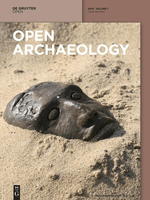
Open Archaeology
Fostering Interdisciplinary Dialogues in ArchaeologyOpen Archaeology is a distinguished open-access journal dedicated to publishing high-quality research in the fields of archaeology, conservation, and education. Since its inception in 2015, the journal has established itself under the esteemed publication of DE GRUYTER POLAND SP Z O O, experiencing rapid growth and recognition, culminating in a Q1 ranking in both Archaeology and Conservation categories as of 2023. Based in the vibrant academic environment of Poland, Open Archaeology caters to a global audience, illustrated by its Scopus rankings which position it 16th in Conservation and 69th in Archaeology, showcasing its significant impact in the arts and humanities sphere. The journal aims to foster interdisciplinary discourse and disseminate innovative research findings to enhance understanding and preservation of cultural heritage. With an unwavering commitment to open access, it encourages widespread dissemination of knowledge, making it an invaluable resource for researchers, professionals, and students alike.

Archaeologies-Journal of the World Archaeological Congress
Engaging with the Echoes of Our AncestorsArchaeologies: Journal of the World Archaeological Congress is a premier academic journal published by Springer, focusing on the dynamic and interdisciplinary field of archaeology. With an ISSN of 1555-8622 and an E-ISSN of 1935-3987, this journal serves as a significant platform for the dissemination of innovative research, theory, and practice within the archaeological community. Hailed for its rigorous peer-review process, Archaeologies consistently ranks in the 74th percentile among its peers, currently holding a Q2 category placement in the field of archaeology as per the 2023 Scopus rankings. The journal publishes original articles, critical essays, and case studies that emphasize the cultural, historical, and methodological aspects of archaeological research from a global perspective. As a key resource for researchers, professionals, and students alike, Archaeologies facilitates critical dialogue and enhances understanding of humanity's past through archaeology. Although the journal is not open access, it provides various subscription options to ensure its valuable content remains accessible to its diverse audience.
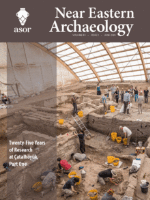
NEAR EASTERN ARCHAEOLOGY
Delving Deep into the Near East's Cultural LegacyNEAR EASTERN ARCHAEOLOGY, published by University of Chicago Press, is a premier journal dedicated to the field of archaeology, particularly focusing on the rich cultural heritage and archaeological findings of the Near East. With an ISSN of 1094-2076 and an E-ISSN of 2325-5404, this esteemed publication provides a vital platform for scholars and practitioners to share their research, insights, and discoveries. The journal holds an impressive ranking in the Q1 quartile for both Archaeology and History in 2023, reflecting its significant impact within these fields and a robust history of scholarly contribution. The journal has been pivotal in shaping discussions around archaeological methodology, theory, and contemporary issues from 2002 to 2024, as it continues to reach a wide audience through various access options. With Scopus rankings placing it in the top percentiles for both History and Archaeology, NEAR EASTERN ARCHAEOLOGY represents an essential resource for researchers, professionals, and students alike, fostering the exploration and understanding of the region's archaeological narrative.
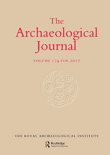
Archaeological Journal
Exploring Humanity's Heritage Through Rigorous ResearchArchaeological Journal, published by Taylor & Francis Ltd, stands as a leading voice in the field of archaeology, with a remarkable distinction in the Q1 category for both arts and humanities as well as conservation, underscoring its critical role in advancing scholarly dialogue and research. With an ISSN of 0066-5983 and E-ISSN of 2373-2288, this journal provides a platform for innovative research from 1977, now offering insights up to 2024. The United Kingdom-based journal is highly regarded, being within the top 81st percentile in archaeology and conservation according to Scopus rankings. Essential for researchers, professionals, and students, the journal's content spans rigorous archaeological studies, theoretical advancements, and discussions on conservation practices, ultimately aimed at fostering a deeper understanding of humanity's past. Notably, with no open access option, it maintains a traditional publishing approach, thereby ensuring curated and high-quality contributions to the academic community.

Conservation Science in Cultural Heritage
Empowering Voices in Cultural Heritage ConservationConservation Science in Cultural Heritage is a leading academic journal dedicated to advancing the field of conservation science and museology, proudly published by MIMESIS EDIZIONI since 2001. Operating as an Open Access journal, it facilitates unrestricted dissemination of research to scholars, professionals, and students worldwide, promoting the exchange of innovative ideas essential for preserving our cultural heritage. With ISSN 1974-4951 and E-ISSN 1973-9494, the journal has earned recognition for its rigorous scholarly contributions, achieving a Q3 ranking in both conservation and museology categories as of 2023. It ranks at the 57th percentile in Museology and the 44th percentile in Conservation according to Scopus metrics, reflecting its growing impact in the academic community. The journal publishes a diverse range of articles, covering interdisciplinary aspects of conservation practices, research methodologies, and case studies, offering critically important insights for furthering understanding and promoting best practices in the safeguarding of cultural artifacts. Through this international platform, Conservation Science in Cultural Heritage aims to inspire collaborative efforts and elevate the standards of research in the vital area of cultural preservation.
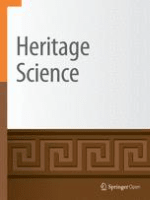
Heritage Science
Elevating the Standards of Archaeology and Conservation ResearchHeritage Science is a prestigious open-access journal, published by Springer since 2013, dedicated to the fields of heritage conservation and archaeology. With an ISSN of 2050-7445, it offers a platform for innovative research and critical discussions, encompassing interdisciplinary approaches that bridge the gap between art, science, and technology. The journal proudly ranks in the Q1 category for both Archaeology (arts and humanities) and Conservation, highlighting its influence and reputation within these scholarly realms. Furthermore, its presence in Scopus with impressive percentile rankings—such as #7 in Conservation and #23 in Archaeology (arts and humanities)—asserts its role as a leading voice in heritage studies. The journal's commitment to open access enhances the dissemination of knowledge, making it an essential resource for researchers, professionals, and students engaged in the preservation and interpretation of cultural heritage. Heritage Science continues to set standards in research quality, encouraging contributions that advance the understanding and sustainability of our shared heritage.
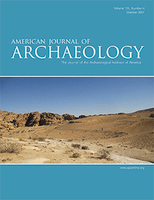
AMERICAN JOURNAL OF ARCHAEOLOGY
Illuminating History Through Rigorous ResearchThe American Journal of Archaeology (ISSN: 0002-9114, E-ISSN: 1939-828X), published by the esteemed University of Chicago Press, stands as a leading scholarly journal in the field of archaeology, celebrated for its rigorous peer-reviewed research. With an impressive impact factor that places it in the Q1 quartile for both archaeology and archaeology within the arts and humanities, this journal ranks among the top 15% in its field, according to Scopus metrics. It serves a global audience of researchers, professionals, and students, facilitating the dissemination of innovative findings from excavations, historical analyses, and methodological advancements. While primarily available through subscription, the journal's archives and features provide invaluable resources for deepening one's understanding of the past and engaging with current archaeological discourse. Operating from its home in Chicago, USA, the American Journal of Archaeology actively contributes to the advancement of knowledge and scholarship in archaeology, making it an essential platform for those invested in the exploration of ancient civilizations and cultural heritage.

Mediterranean Archaeology & Archaeometry
Advancing Knowledge in Archaeology and ConservationMediterranean Archaeology & Archaeometry is a premier academic journal dedicated to advancing the fields of archaeology, anthropology, conservation, and history, published by UK Zhende Publishing Ltd. With its ISSN 1108-9628 and E-ISSN 2241-8121, this journal serves as a vital platform for scholars and practitioners to disseminate innovative research and findings related to the rich archaeological heritage of the Mediterranean region. It has gained remarkable recognition, achieving a Q2 ranking in anthropology and archaeology, and a Q1 classification in several categories including arts and humanities, conservation, and history as of 2023. Its impressive Scopus rankings underscore its impact, with a significant position in history (59/1760) and conservation (11/103) disciplines. Spanning years from 2008 to 2022, the journal invites open access contributions to foster collaboration and interdisciplinary dialogue among researchers, students, and professionals alike, making it an indispensable resource for those engaged in the exploration and preservation of historical narratives within the Mediterranean context.
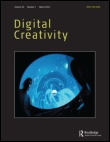
DIGITAL CREATIVITY
Elevating the Discourse on Digital Aesthetics and InteractionDIGITAL CREATIVITY, published by Routledge Journals, Taylor & Francis Ltd, is a distinguished academic journal that serves as a vital platform for interdisciplinary research across the realms of Arts and Humanities, Computational Theory and Mathematics, Computer Graphics, and Human-Computer Interaction. Since its inception in 2005, this journal has aimed to explore the intersection of digital technologies and creative practices, making significant contributions to our understanding of digital aesthetics, interactive design, and the evolving nature of creativity in the digital age. With an impressive Q1 ranking in Arts and Humanities and notable standings in related computational fields, DIGITAL CREATIVITY appeals to a diverse audience of researchers, professionals, and students eager to engage with pioneering studies and innovative methodologies. While it presents valuable content primarily through subscription access, its credence in driving forward-thinking discussions is underscored by its ongoing relevance and commitment to advancing knowledge in a rapidly changing digital landscape. Join the conversation and contribute to shaping the future of digital creativity.
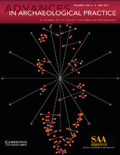
Advances in Archaeological Practice
Innovating the Future of ArchaeologyAdvances in Archaeological Practice, published by Cambridge University Press, is a leading journal in the field of archaeology, emphasizing innovative approaches and methodologies that advance archaeological research. With an ISSN of 2326-3768 and a commendable Q1 ranking in both the Arts and Humanities and Social Sciences categories, the journal effectively bridges theoretical perspectives and practical applications, positioning itself at the forefront of archaeological scholarship. Researchers and professionals can benefit from its high-impact content, reflected in its 93rd percentile ranking in the field, making it an essential resource for those aiming to stay abreast of the latest insights and practices. Although it operates under a subscription model, the quality and relevance of its publications ensure it plays a crucial role in shaping the discourse within the archaeological community and beyond, facilitating access to cutting-edge research that enhances our understanding of past human activities.